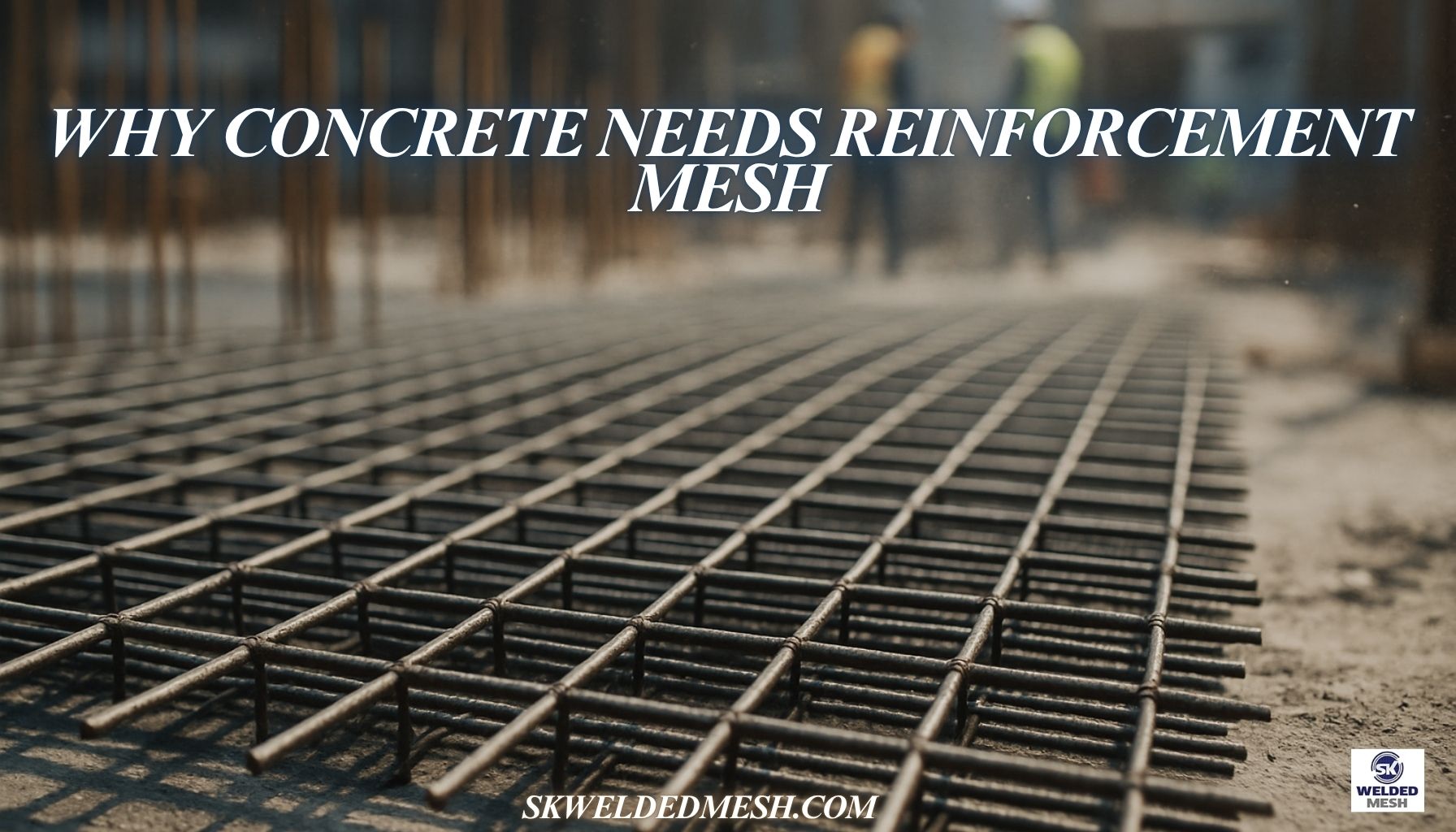

Concrete looks solid. You pour it, let it set, and it seems ready for anything. But over time, the surface tells a different story—hairline cracks, chipped edges, uneven settling. These aren’t flaws in the mix. They’re signs that something inside was missing. Concrete holds its own weight well. What it struggles with is tension. That’s where reinforcement mesh steps in. And that’s where your decisions—before the pour—start to shape everything after it.
Concrete carries load well when compressed. It holds up towers and anchors bridge decks without flinching. But pull it sideways or shift the base, and it starts to show stress.
Small cracks form, and if left unchecked, they spread. Reinforcement mesh absorbs those internal tensions and spreads them through the grid.
That reduces stress in one spot and shares it across the whole slab or panel. It’s not about adding bulk but adding balance.
When wet concrete hits the formwork, it pushes. Corners shift. Mid-sections sag. Even a slight buckle in the mold can ruin the finish.
Mesh gives the mix something to grab onto as it cures. It keeps the body tight and holds the depth where it should stay.
We’ve worked with clients on large raft foundations where mesh placement made the difference between a level base and one that needed grinding. It’s small details that save big time.
Concrete always moves. Temperature changes, load shifts, even soil settling below—all these motions add stress.
With mesh inside, the structure holds together longer. The reinforcement doesn’t stop the movement, but it keeps it from pulling the body apart.
You’ll see the result years later in fewer repairs, straighter lines, and smoother finishes.
Some of the longest-lasting infrastructure we’ve supplied mesh for shows the fewest signs of distress, even after decades of use.
Engineers build for more than weight. They consider vibrations, lateral forces, and unexpected hits—like a forklift bump or a small quake.
Reinforcement mesh lets the concrete flex a little without failing. It gives enough room for adjustment but enough strength to bounce back.
We’ve supported tunnel linings, metro stations, and slab-on-grade work where this balance mattered more than raw strength. The job wasn’t to hold still. It was to hold together while moving slightly.
Laying mesh is faster than setting rebar grid by grid.
When welded mesh arrives pre-cut and ready, it saves time from day one. Crews don’t need to measure on site or splice by guesswork.
On larger pours, this cuts hours from prep and reduces waste.
We’ve seen multi-phase jobs stay ahead of schedule simply because the reinforcement planning kept pace with the casting plan. The mesh didn’t just reinforce the slab. It reinforced the workflow.
Concrete holds the weight, but mesh carries the risk. That’s what we’ve seen again and again while working with contractors across structures that range from storm drains to elevated tracks.
Our role has been to deliver mesh that lands on site ready to work—cut right, spaced right, and ready to take pressure.
If your slab, beam, or wall needs to do more than look finished, this is the step worth locking in early. We’re here when you’re ready to do that. Get in touch with us today.